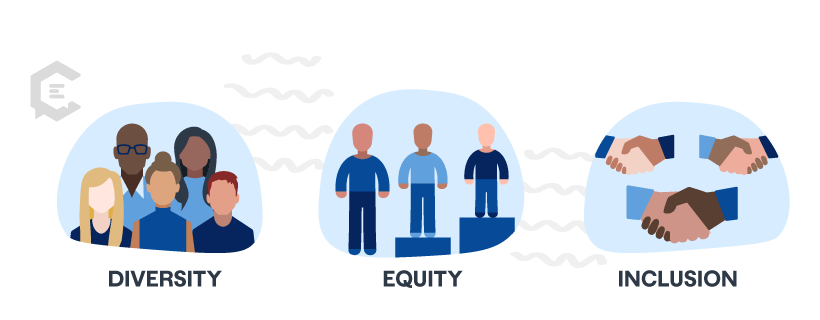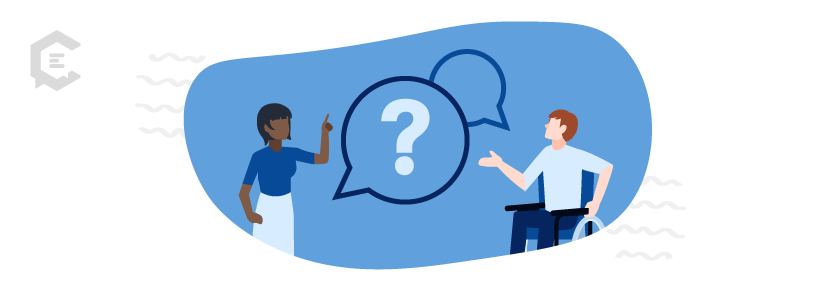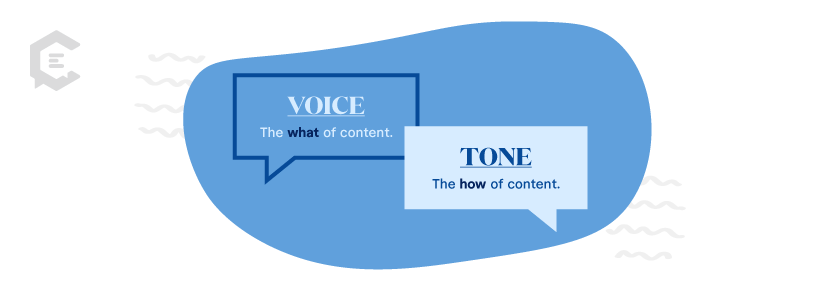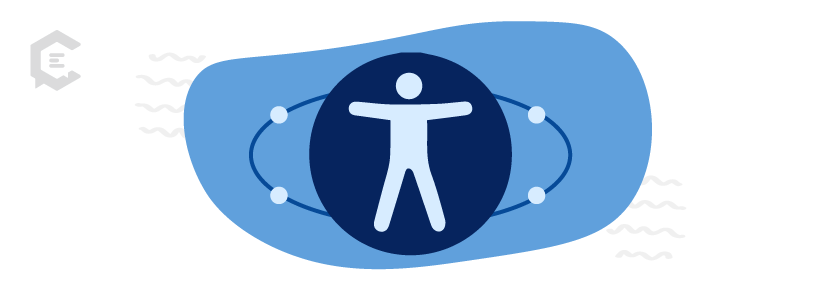Content is foundational to bringing digital experiences to life. How might content creators ensure these experiences are not only accessible, but open to a diverse population, and equitable and inclusive for all?
You’ve likely heard stories of would-be customers attempting to visit an establishment only to learn that, for one reason or another, that establishment cannot (and sometimes, will not) accommodate them. The same can happen with web copy and websites — and the answer is accessible content.
Even with advancements made possible by the Americans with Disabilities Act (ADA), large segments of society continue to be denied equal access to places and spaces that many take for granted. That includes digital information spaces.
Understanding “diversity,” “equity,” and “inclusion” (DEI)
“Modeled after the Civil Rights Act of 1964, which prohibits discrimination on the basis of race, color, religion, sex, or national origin – and Section 504 of the Rehabilitation Act of 1973 — the ADA is an “equal opportunity” law for people with disabilities.” — Introduction to the ADA
The ADA defines disability as “a physical or mental impairment that substantially limits one or more major life activities, a person who has a history or record of such an impairment, or a person who is perceived by others as having such an impairment.”
The Web Accessibility Initiative (WAI), part of the World Wide Web Consortium (W3C), advocates for accessible content in digital spaces, providing “strategies, standards, and supporting resources” to help “make the web more accessible to people with disabilities.”
WAI provides discipline-specific resources for content writers, designers, developers, and just about every member of a multi-disciplinary team involved with building digital experiences, and features the Web Content Accessibility Guidelines (WCAG) that further explain how to make web content more accessible to people with disabilities.
While the ADA is a single source of truth for physical accessibility, and WAI/WCAG is the gold standard for digital accessibility, no single source exists for definitions of diversity, equity, and inclusion (DEI).
But what does the digital design space have to say about DEI?
How to begin designing for diversity, an online guide to “building equitable products, services, and content,” authors Boyuan Gao and Jahan Mantin of Project Inkblot write:
- Diversity is quantitative. It’s the composition of different people represented in what you make, and the decision-makers on your team.
- Equity lives in how we design our systems and processes; the way we work, and who we work with, so we are upholding our commitment to diversity and inclusion.
- Inclusion speaks to the quality of the experience you’ve designed for these diverse folks, so they experience themselves as leaders and decision-makers.
A note here about the use of the word design: Gao and Mantin define design as “the creation of a plan to build an object, system, or human interaction.” When you get right down to it, accessible content is integral to those plans.
As Writing is Designing authors Michael J. Metts and Andy Welfle put it: “Writing is part of the design process, and writers are designers… people who want to use words to build better, more humane technology.”
Understanding your audience is the first step in creating accessible content
Whether writing an article, creating product copy, or writing microcopy for a digital application, it’s vitally important to know your audience, especially when setting out to create content that is more diverse and inclusive.
There are several resources that can help you gain that knowledge:
- Glean product marketing demographics from customer profiles, competitive analysis, and related research.
- Use analytics tools, surveys, and other data collection methods to gather digital user information.
- Conduct a simple search of a brand or publication name online.
- Search keywords relevant to the brand, product, or service.
- Monitor social media accounts for the brand (as well as competitors).
All of these methods can give you an idea of who is talking about the brand, and what they are saying — the good and the not-so-good. There is value in negative commentary, which can reveal insights on gaps in content that you can begin to address in the content you create.
Many digital product teams rely on personas — fictional representations of an aggregate of users that comprise a target audience — to create products and services. Personas are great tools to use in the product development process, helping teams stay focused on user needs.
However, as Sara Wachter-Boettcher cautions in her book, ‘Technically Wrong,’ “Most of the personas and other documents that companies use to define who a product is meant for don’t need to rely on demographic data nearly as much as they do. Instead, they need to understand that “normal people” include a lot more nuance – and a much wider range of backgrounds – than their narrow perceptions would suggest.”
In other words, personas also need to be diverse and inclusive. Otherwise, you risk excluding potential users from your target audience who may feel alienated from the experience you’ve created.
Ask questions to help break down unconscious biases
“Empathy is the foundation of great design. The better you understand the needs, aspirations, hopes, and challenges of the people you’re designing for, the more likely your solutions will be adopted and embraced.” — IDEO Design Kit
Knowing those you want to target with content helps you create welcoming information spaces. For current consumers, content that meets their needs provides value for their time and effort.
And as you work to formulate content that invites and embraces differences beyond the current audience, you begin to cast a wide net over those who may want to be part of a brand’s conversation, but whose voices were never welcomed to the digital table.
From Metts and Welfle: “…if the language you use tells a potential user that you didn’t think about their experience when building this thing, they’re not going to use it. That’s a big chunk of revenue you’re leaving on the table.”
Knowing how and where content is consumed can also help your content become more diverse and inclusive. A good way to get at this information is to ask questions.
Gao and Mantin provide an excellent list of questions for what they call Building a Shared Language. These questions can help identify and break down any biases you or your team may have with the goal of expanding your consideration beyond best-case scenarios and can surface potential barriers to user groups you may not have considered — users who may not be reflected in the makeup of your team:
- What’s the worst-case scenario, and on whom?
- How do the identities within your team influence and impact your design decisions?
- Who might you be excluding?
- How will you engage the people you want to reach within your design process, equitably?
Additional questions include:
- What are your top priorities for this project?
- What do you value when working with others? Name three behaviors (e.g. integrity, honesty, open communication)
- What race(s) and gender(s) do you identify as? What other ways do you identify, that are important to you? (e.g. queer, Latinx, middle-class woman in my 30s, aunt, grew up in a military family, etc.)
- How might these identities influence and/or inform how you design products or services?
- What perspectives or lived experiences might be missing from your team?
Freelance creators may find it useful to sit with clients to help glean answers that may be relevant to the content you’re creating and the people you’re creating it for.
Consider content voice and tone through a DEI lens
As you’re creating content that is more inclusive and welcoming, it’s important to revisit the concepts of voice and tone:
- Voice — Jargon-free content that represents the brand, product, or service being offered — the what of content.
- Tone — Content created by the brand that speaks to a variety of user types — the how of content.
Considering voice and tone through a DEI lens may trigger a sense of overwhelm. There’s so much to learn. So much to consider. And so much that can go sideways. That’s OK. The whole idea is to think of what is possible when crafting accessible content that fosters a sense of belonging for everyone, rather than content that emphasizes “otherness.”
Normalizing content for digital spaces starts with content creators.
Executing your accessible content strategy
Before content creators write a single word, most consult writer’s guidelines, style guides, and similar documents to help guide the creation of content that adheres to established standards.
Many large brands have established brand copy guidelines that address accessibility, voice, and tone, and also cover nuances you won’t find in AP or Chicago style manuals, including:
These resources are freely available online and model how businesses craft content that balances brand voice with content that not only meets the needs of users but also addresses accessibility and inclusivity.
There are similar resources that take diversity, equity, and inclusion into consideration and can help you find the right tone for your readers or users:
The Conscious Style Guide is “the first website devoted to conscious language,” with the mission “to help writers and editors think critically about using language — including words, portrayals, framing, and representation — to empower instead of limit,” and includes guides for myriad topics, including:
Creating safe spaces with content
“We must rapidly begin the shift from a thing-oriented society to a person-oriented society. When machines and computers’ profit… the giant triplets of racism, materialism, and militarism are incapable of being conquered.” – Martin Luther King
This MLK quote remains relevant today, especially as content designers and other creatives consider how to incorporate diversity, equity, and inclusion into the creative process. And while not a cure-all for the ills that turning a blind eye to matters of DEI can cause, the content we create is integral to the creation of safe, welcoming, and inclusive information spaces for all.
Additional DEI resources
- The Tarot Cards of Tech – A deck of cards created by Seattle-based design and strategy consultancy Artefact Group, as “a tool to inspire important conversations around the true impact of technology and the products we design,” and to “encourage creators to think about the outcomes technology can create, from unintended consequences to opportunities for positive change.”
- Diverse City LLC – A DEI consultancy offering clients “a solutions-oriented approach to helping companies assess and solve issues of growth and development in areas of diversity, equity, and inclusion.” The consultancy’s YouTube channel features learning videos that explore a variety of DEI-related topics.
- Creative Reaction Lab – Consultancy and creators of Equity-Centered Community Design (ECCD), a design process focused on “a community’s culture and needs so that they can gain tools to dismantle systemic oppression and create a future with equity for all.” In addition to a field guide to facilitate the ECCD process, the consultancy offers virtual learning opportunities useful to designers of all kinds.










